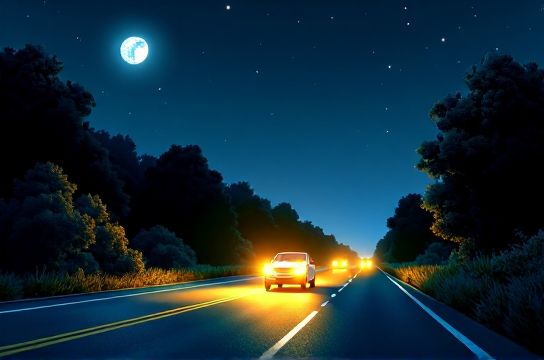and Night Visibility
- 时间:
- 浏览:16
- 来源:OrientDeck
Ever stepped outside at dawn and wondered why everything looks so different from midday? Or tried driving at night and felt like your eyes just can't keep up? Welcome to the fascinating world of day and night visibility—where light, human biology, and environment collide.

Visibility isn’t just about whether you can see something. It’s about clarity, contrast, distance, and reaction time. And guess what? These factors shift dramatically between day and night. Let’s break it down with real data, a few surprises, and some practical takeaways.
The Science of Seeing: Day vs. Night
During the day, we rely on photopic vision—our cone cells are in charge. They love bright light and give us sharp color vision. At night, rod cells take over. They’re super sensitive but don’t detect color and need more time to process images. This switch causes a noticeable drop in visual acuity and contrast sensitivity after sunset.
According to the National Highway Traffic Safety Administration (NHTSA), 50% of traffic fatalities occur at night, even though only 25% of travel happens during those hours. That’s a sobering stat—and visibility is a major reason why.
Key Factors Affecting Visibility
- Ambient Light Levels: Daylight averages 10,000–25,000 lux; moonlight? Just 0.1–1 lux.
- Contrast Sensitivity: Drops by up to 60% in low light.
- Pupil Dilation: At night, pupils widen to let in more light—but this also increases glare from headlights.
- Color Perception: Almost nonexistent in scotopic (night) vision.
Real-World Visibility Comparison (Day vs. Night)
| Metric | Daytime | Nighttime |
|---|---|---|
| Average Luminance (lux) | 12,000 | 0.5 |
| Visual Acuity (20/?) | 20/20 | 20/40 to 20/100 |
| Reaction Time (ms) | 300 | 500+ |
| Effective Recognition Distance (car at 60 mph) | 200 feet | 80 feet |
| Peripheral Detection | Excellent | Fair to Poor |
That table hits hard. At night, you're literally seeing less, reacting slower, and spotting hazards later. No wonder nighttime driving feels so intense.
How Technology Helps (And Sometimes Hurts)
Modern cars come with adaptive headlights, night vision, and automatic high beams. These can improve detection range by up to 40%. But here's the catch: LED and HID headlights from other vehicles create more glare, especially for older drivers whose lenses scatter light more.
Interestingly, a 2022 study in Optometry and Vision Science found that drivers over 50 need three times more light to see the same details as younger adults. Age matters—big time.
Pro Tips for Better Night Visibility
- Keep your windshield clean—both inside and out. Smudges amplify glare.
- Adjust your rearview mirror to night mode to reduce headlight dazzle.
- Blink more—dry eyes worsen night blur.
- Use the 'two-second rule'—double it at night for safer following distance.
- Get regular eye exams—cataracts and retinal issues silently degrade night vision.
Final Thoughts
Day and night visibility isn’t just about turning on headlights. It’s a complex dance of physics, biology, and behavior. Understanding the differences helps you make smarter choices—whether you're driving, walking, or just enjoying a sunset.
So next time you hit the road after dark, remember: your eyes are working harder than you think. Respect the night, prep your vision, and stay safe out there.